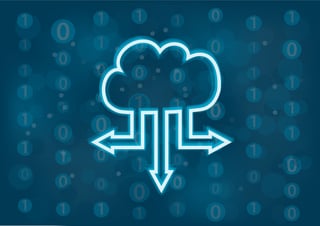 There is a great deal of conversation and interest about hybrid cloud and hybrid IT in the IT community today. While these two buzzwords do share some distinct similarities, they are also very different business IT solutions. Here’s where they find common ground:
There is a great deal of conversation and interest about hybrid cloud and hybrid IT in the IT community today. While these two buzzwords do share some distinct similarities, they are also very different business IT solutions. Here’s where they find common ground:
- They both involve cloud computing and multiple geographical disbursements of IT services and resources.
- They both work to help reduce costs and increase the flexibility and agility of enterprises today.
- Both of these approaches to IT are innovative and organizations are integrating them within their enterprises at an ever-quickening pace today.
- Both of these concepts introduce new cost structures into the enterprise that offer budgetary advantages and allow for greater control of costs.
However, in the end, hybrid IT is not the hybrid cloud, although it is easy to confuse the two. Keep reading, and we’ll provide clarity to the similarities and differences of each of these innovative technology approaches.
What is Hybrid Cloud?
While it is true that hybrid cloud is a facet of hybrid IT, they are not the same. The hybrid cloud is a type of cloud deployment architecture that consists of at least two separate geographical locations. Typically, it involves an on premise private cloud that is integrated with one or more public clouds. These clouds then collectively host digital services, data and applications for users, all of them managed through a common management interface by the IT team.
Cloud bursting is a common example of this type of deployment model in which additional servers and services are automatically provisioned in the public cloud in order to handle peak usage or unforeseen demand. These can be decommissioned once they are no longer required. For example, an IT team that already manages a private VMware virtual farm using vSphere can integrate hosted services within vCloud Air into a united infrastructure using either VMware Air Hybrid Manager or vRealize.
The hybrid cloud offers the best of both worlds. It offers the flexibility provided by self-provisioning on-demand capabilities of the cloud while retaining full control and management of data and applications when desired. Yes, the Hybrid Cloud is a great place to be. But what if you are a mature organization with existing legacy applications and infrastructure that are not cloud ready? As Gartner states, "Not everything can or should be cloud.” That’s where hybrid IT comes in.
What is Hybrid IT?
Hybrid IT is not about any one technology; it is an approach, strategy, or blueprint which governs the deployment and delivery of applications, digital services, and information. Hybrid IT bridges the typically disparate worlds of business IT solutions involving legacy and cloud applications. The goal of hybrid IT is to create cloud-like delivery models that provide users with the tools they need, when they need them. In other words, this technology approach is about attaining the identical service capabilities of the cloud, for your entire infrastructure, whether it be traditional in-house data center technology or public/private cloud services. Hybrid IT unifies both words of the enterprise.
Hybrid IT is not about one technology or one location. It is about one IT organization, one vision, and one encompassing goal – to optimize the user experience by delivering workloads with simplicity and flexibility end-to-end across the enterprise. Hybrid IT is about attaining a level of composable infrastructure throughout the data center so that physical compute, storage and network fabric resources are delivered as services.
Hybrid IT as a Guiding Compass
You can think of it this way: hybrid cloud is like the North Star, and hybrid IT is like the compass that serves as the navigational beacon to help attain cloud-like performance for all enterprise resources. Hybrid IT is the roadmap, providing the system tools and concepts to get them there.
While the hybrid cloud and hybrid IT are not one and the same, the results that they are designed to achieve are identical. Though the eventual goal of every organization should be a cloud based self-provisioning deployment infrastructure, most organizations remain saddled with the decisions and undertakings from the past. Today’s IT landscape clearly shows us where business and IT need to collectively arrive in their collaborative journey. Work with WEI, a custom technology socultions provider to make the best decision for your company. For more information, download our white paper, “An Introduction to the New IT Approach Called Hybrid IT.”












